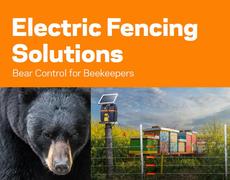Most people don’t think too much about their power supply. As long as you pay your electric bill, you’re generally able to simply plug your tool or device into a wall socket and power it up. However, not all power supplies are the same. Most (North American) homes, for instance, are powered by single-phase power. This form of power supply is perfect for homes and small businesses. It allows users to power lights, computers, televisions, cash registers, and small appliances.
However, if you run a factory, operate industrial tools, run a data center, or operate a business that requires you to power certain commercial devices, industrial motors, or processing computers, you will need to use 3-phase power. But what’s the difference between these two power supplies?
3-Phase Power Explained
3-phase power is a type of alternating current (AC) power generation and supply, which basically means that the flow of electricity within a circuit periodically changes direction. Alternating current is the primary method by which power is distributed within homes and businesses.
3-phase power is the most common form of alternating current power distribution on electrical grids. By using less material to transmit power than a single-phase power supply, 3-phase power is a more efficient form of power distribution, and a cheaper option, too.
How It Works
The electricity from the aptly named 3-phase power supply is delivered by three conductors carrying an alternating current. Each conductor uses the same frequency and voltage amplitude, but with a phase separation of one third of a cycle, or 120 electrical degrees.
This means that within each cycle, each of the three conductors reaches its peak at uniformly separate occurrences, which helps to reduce generator and motor vibrations. The waveform of 3-phase power dictates that the electrical load is constant. The consistency of 3-phase power is what makes it a useful way to deliver power to large motors, data centers, and more.
Efficient Power Supply
The major advantage of 3-phase power over single-phase power is efficiency. Machines that use 3-phase power can be smaller, lighter, and ultimately more economical. Moreover, 3-phase power allows you to supply more power to your tools, motors, and devices. A great way to extend this benefit to even more of your tools and devices is to use a multi-outlet extension cord.
The efficiency of a 3-phase power supply frees you up to power more devices at a lower cost. This balanced, economical power supply allows you to run the devices you need, all the while using less power, getting better results, and maximizing the life of your equipment.
Get the Right Equipment for Your Power Supply
If you are in the market for new equipment, need to add additional processors to your data center, or are thinking about increasing your industrial operation, make sure to read up on what kind of power supply you’ll need for your gear. Switching to a 3-phase power supply can make your equipment more efficient, save money, and extend the life of your tools and supplies.





